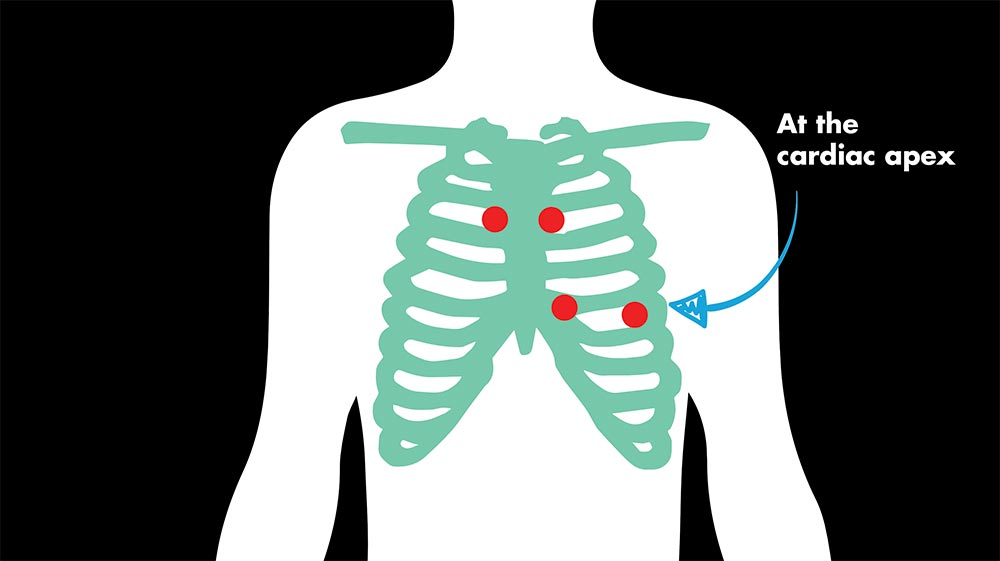S4 Heart Sound
Introduction
The S4 heart sound is also known as an "atrial gallop". That's because the S4 heart sound occurs just prior to the S1 heart sound
It is rarely a normal finding, often heard in diastolic heart failure. Other pathologies you can hear an S4 in include:
- Severe left venticular hypertrophy
- results from impaired relaxation of the left ventricle
- myocardial infarctions (MI)
- the heart fails to relax becuase of dying myocardium
- post-MI myocardial fibrosis
- cardiomyopathies
- e.g. hypertrophic cardiomyopathy, restrictive cardiomyopathy
Location
As depicted in Figure 2, the S4 heart sound is best heard:
- with the patient in the left lateral decubitus position
- bell of the stethescope
- at the cardiac apex
Sound
The S4 heart sounds is rarely a normal finding, unlike the S3 heart sound, which can be normal.
The S4 heart sound occurs when the atria contract forcing blood into a non-compliant ventricle (as opposed to the S3 sound which occurs with an overly compliant ventricle).
The S4 sound is low pitched and often described as having the cadence of the word "TENNESSEE".





